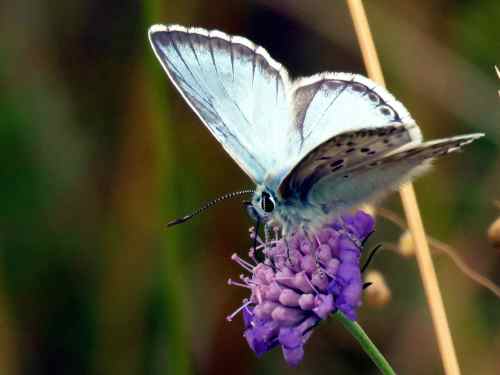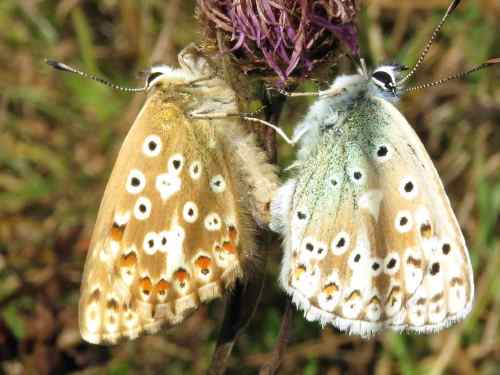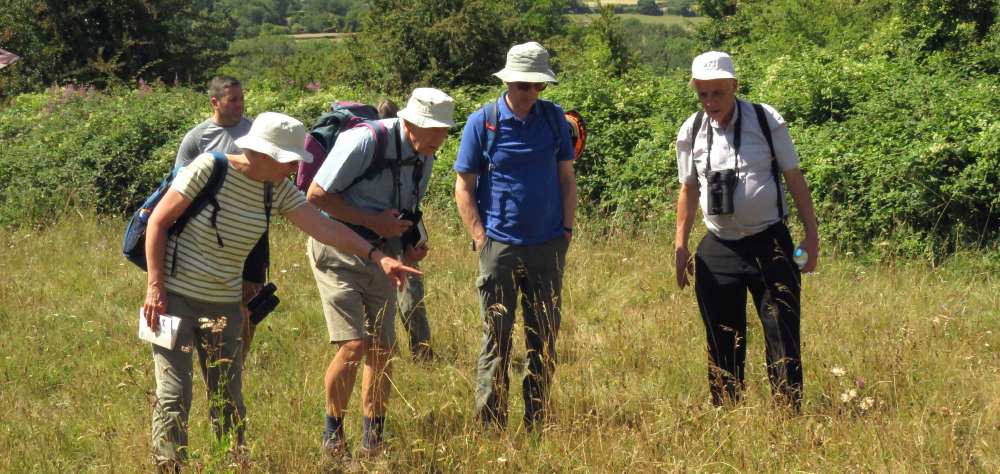Above: Small Copper © Geoff Hiscocks
Leader: Geoff Hiscocks
Hazelbury Common is an area of unimproved grassland split in two by a narrow lane. It is just within the defined Bath Nats area. It is probably the best place to see a wide variety of butterflies within that recording area, with getting on for 30 species found in most years. This is particularly remarkable given its relatively small size. Since parking at the site is very limited it was decided that it would be best to walk up the A365 from the Selwyn Hall car park in Box to the Common just over a mile away.
11 of us , not including the leader, gathered in the car park on Saturday morning prior to walking in warm , sunny weather along the pavement to the site, the last part being a short stroll up the lane dividing the site and along the bridleway at the bottom of the Common. Once stepping from the bridlepath on to the grass, which was unusually long, we were met immediately with Gatekeepers, Common Blues (both male and female) and Shaded Broad Bar moths. Some hornets were also observed flying low over the grass.
Of particular interest at this point, just off the path (partially obscured by the long grass ) was the Marsh Fritillary larval web that we came across. It contained dozens of small caterpillars who had spun the web around and on Devil’s–bit Scabious on which the eggs are laid. The larvae spin a dense and conspicuous communal web and go through various stages before pupating prior to emerging as the adult butterfly. Hazelbury Common has many adult Marsh Fritillaries each year and it is the best site in the Bath area to see this nationally vulnerable butterfly.
They breed year after year in the same patch of grassland, emerging from mid May well into June and Hazelbury is a perfect example of such a site. There must be many larval webs on the Common each year which are never discovered, with only two or three found most years.

Male Chalkhill Blue © Geoff Hiscocks

Mating Chalkhills (male on right) © Geoff Hiscocks
Having spent some time discussing the several features which distinguish male and female Common Blues we proceeded up the main path running alongside the lane before we came to the principal Chalkhill Blue area. On the way there we added Small Heath and Meadow Brown to the species list and came upon another larval web as well as several Meadow Grasshoppers. We had no trouble finding some Chalkhills which were still showing well, mainly males, but also some females and even a mating pair.
Again there was a discussion of how the pale blue males differed from the mainly brown females in respects other than colour. Both sexes were nectaring on thistles, knapweeds and scabious while we stood around admiring and photographing them.
We had hoped to see some Adonis Blues, the second generation of which I had been told were emerging at the time of our visit , mainly across the lane on the other side of the Common. Although we all moved over there to look for some of these brilliantly blue butterflies we were unable to find any definite examples. Some are now seen on the Common most years in Spring and late Summer.

Looking for Adonis © Geoff Hiscocks
Now that lunchtime was approaching several members left us at this point to start the walk back to the car park. As a result some probably missed seeing the Small Copper that was spotted and photographed later at the bottom of the Common close to the bridleway where we had first come onto the site. Brimstone and Speckled Wood were also seen here and with the Holly Blue that was seen on ivy down near the car park, the butterfly species total for the morning was brought up to 10. I have included the presence of the Marsh Fritillary caterpillars in this total.
Geoff Hiscocks


Recent Comments